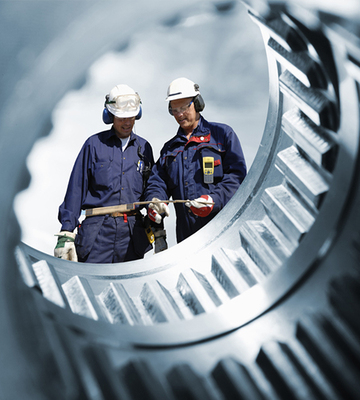SERVICES
Asset Criticality Assessment (ACA)
There are so many decisions you have to make when striving to improve reliability that require prioritization. Which machines do I include in a condition monitoring programme? Which spares do I need to keep on hand? How do I prioritize work requests? Which projects identified in my “bad actor” list do I work on first? Which assets do I include in my detailed RCM analysis? And you can probably think of others.
Asset Criticality Analysis is a process by which assets are assigned a criticality rating based on their potential risk. Asset-dependent organizations need to be continually educated and diligent about the importance of classifying assets in terms of the impact of asset failure on the organization. The aim is to identify the consequence and likelihood of failure of an asset to perform its function. The results of the asset critically analysis can be used to develop an appropriate and cost-effective maintenance strategy to manage organizational risk.
What is Asset Criticality Ranking?
Consequences: The consequence of failure (including the impact on production, safety, environment, and quality, and the replacement/repair cost)
Reliability: The reliability of the asset (the likelihood that it will develop a fault condition that would lead to functional failure such that we would experience those consequences)
Detectability: The detectability of the fault condition (how likely it is that we will detect the onset of failure and thus avoid those consequences)
At one extreme we could have an asset that is unreliable, with no means of detecting imminent failure, with dire consequences if failure occurs. That asset poses a serious risk. That asset will achieve a high asset criticality ranking. At the other extreme, if the consequence of failure is very low, and the reliability is high, and we will be warned when failure is imminent, then it poses almost no risk and there is no point in taking any preventative action. We can probably let that asset run to fail.
Therefore, rather than having a criticality ranking scheme that simply declares that an asset is critical, essential, or nonessential (or some other categorization), it is important to develop a numerical scoring system that enables you to make important decisions.
Recent Post
Experts Engineers Support
Global Resources
Customer Satisfaction
Ranking the Consequence of Failure
You would then define five levels of severity in each of those areas. For example, for maintenance the five levels could be:
Insignificant: Minimal damage to equipment. No effect on other equipment. Spare held on-site.
Minor: Moderate damage to equipment. Minimal damage to other equipment. Spare held in the region.
Moderate: Major damage to equipment. Damage to other equipment. Spare available in less than one day.
Major: Destruction of equipment. Major damage to other equipment. Spare held in state but available for more than one day.
Extreme: Destruction of equipment. Destruction of other equipment. Spare is not held in the state.
When assessing the failure risks to determine equipment criticality, there are four key tips for achieving a robust, but streamlined process.
- Realise that risk relates to events – not equipment
- Select only one event – the event
- Assess only one risk dimension – the one with the highest level of risk
- Start at the top of the equipment hierarchy and work down
Process
Listed below are the key steps in the completion of a criticality analysis:
- Identify the inventory of assets.
- Assign a Probability of Failure (PoF) to each asset based on knowledge of the consumed life along a survivor curve or degradation curve.
- Assign a Consequence of Failure (CoF) ranking to each asset based on knowledge of the significance of the failure effects.
- Assign any weightings to reflect the owners operating standards.
- Rank all the assets based on their criticality index (PoF x CoF x weighting).
- Map all the assets onto a criticality matrix.
- Identify the critical assets and the non-critical assets
- Determine the intervention practices to manage the risk through an appropriate maintenance mix – time-based maintenance (TbM) and condition-based maintenance (CbM).
Benefits/ Values
- Criticality ranking factors that reflect the business drivers of the organization
- Reports and export options that quickly and clearly illustrate answer distributions and criticality rankings, both individual and overall
- Group consensus on the relative criticality ranking for all systems and machines
- Support and justification for work management decisions going forward
Get A Free Quote
Other Related Services

Failure Mode and Effect Analysis (FMEA)

Reliability Centered Maintenance (RCM)





